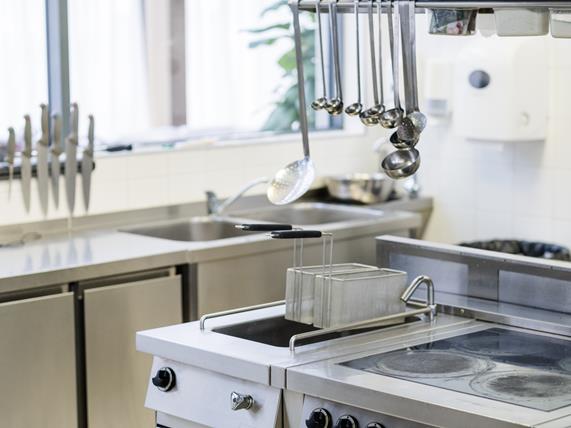When it comes to buying commercial kitchen equipment, one would realize that their price tags are significantly higher than the equipment used in home kitchens. But beyond that, how is it really different?
Here are several ways that commercial and domestic kitchen differ.
Made for commercial use
Kitchen equipment such as refrigerator, dishwasher, stoves and the like are commonly used in every household and commercial kitchen. In a domestic kitchen, you would usually find a cook stove with four burners, an oven, a refrigerator and some counter space. On the other hand, a commercial kitchen is usually comprised of a huge stove, several ovens and refrigerators, a walk-in freezer and a large workspace.
Unlike in a residential kitchen where cooking is intended for family members, a commercial kitchen is made to prepare food for a large crowd. The equipment is specifically made to handle frequent usage and high volume of orders.These equipment are made to a significantly higher specification and function takes precedence over everything else. It has to be capable of doing things that a home kitchen could never do, such as roast 40 ducks simultaneously.
Commercial refrigerators typically come with a larger compressor to chill foods more quickly and larger storage space to store large amounts of raw ingredients as well as food products. Commercial dishwashers are more effective in offering proper sanitation and faster cleaning speed. Also, they are large enough to accommodate bigger load and bulkier items such as pots, pans, utensils and cutlery.
Layout of the kitchen
Safety, work efficiency, productivity and mobility are the main concerns when it comes to the commercial kitchen layouts.
Unlike in a home kitchen, where the entire cooking process takes place within the same area, a commercial kitchen tends to have different zones dedicated to food preparation, cooking, cleaning as well as storage. Each zone requires sufficient space for ease of movement, allowing workers to move and work safely. Most importantly, commercial kitchens need to have a bigger space to accommodate all essential kitchen equipment and appliances.
Storage
Due to the sheer volume of food that needs to be prepared and cooked, many commercial kitchens have large areas for storage. Having plenty of storage is important to ensure that the kitchen is operating efficiently at all times.
The storage areas for commercial kitchens can be categorized into cold storage, dry storage and non-food storage. With cold and dry storage, the raw ingredients and non-perishable foods can be stored separately so as to prevent foodborne illness. To avoid food contamination, non-food supplies such as disposable products and cleaning chemicals are kept in non-food storage, far away from the food processing and food storage areas.
In residential kitchens, however, there is usually limited space to clearly separate cold, dry and non-food storage areas.
Ventilation system
Having a ventilation system is a necessity in every kitchen, whether commercial or domestic. As the amount of cooking fumes produced in a commercial kitchen is far higher than that in domestic kitchens, the ventilation system has to be more functional than the domestic ones.
In this regard, a high-powered ventilation system helps control the temperature and air quality, thus maintaining a comfortable kitchen environment. It also keeps the kitchen safe by venting out combustion gases.
With the excess heat, vapor and air emitted in the kitchen, commercial ventilation equipment are also manufactured from heavier materials, making it more durable than standard residential types.



